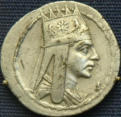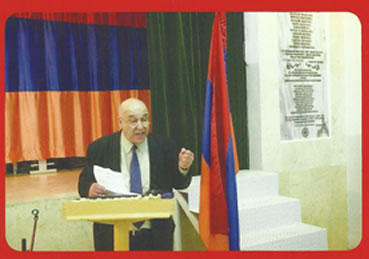

Armenian Jerusalem



array of antennas on compound roofs

The
Armenian
presence
in
Jerusalem
dates
back
to
the
4th
Century
AD
[some
sources
assert
Armenians
first
came
to
the
region
around
90BCE].
Armenia,
under
King
Tiridates
IIi,
became
the
first
country
to
adopt
Christianity
as
the
state
religion
of
Armenia,
thus
making
the
Armenian
Kingdom
the
first
state
to
embrace
Christianity
officially.
Following
that,
a
big
number
of
Armenian
monks
came
to
the
Cradle
of
Christianity
-
Jerusalem,
which
is
considered
the
essence
of
their
faith.
The
construction of St. James Armenian Monastery began in the same century.
An Armenian scriptorium was established in the 5th century.
A
secular
Armenian
community
was
established
in
the
6th
Century
over
the
area
neighboring
Mount Zion, inside the walls of the Old City of Jerusalem.
This
Armenian
community
(nowadays
called
the
citizens,
"Kaghakatsiner")
was
mainly
composed of merchants and artisans.
The
Armenian
patriarchate
was
established
in
the
7th
Century;
while
the
Armenian
Monastery
was last expanded in the 12th Century.
The
Armenian
Quarter
developed
gradually
around
St.
James
Monastery,
and
took
its
modern
shape in the 19 Century.
Before
World
War
I,
the
number
of
Armenians
in
Jerusalem
was
around
2500
people.
During
the
British
Mandate
of
Palestine,
thousands
of
1915
Genocide
survivors
found
refuge
in
St.
James
Monastery
from
1918
and
onwards.
In
1925
around
15,000
[some
sources
put
the
figure
at
25,000]
Armenians have lived all over Palestine, mainly in the Armenian Quarter of Jerusalem.
In
1947
around
1,500
Armenian
Genocide
survivors
repatriated
to
the
Soviet
Republic
of
Armenia (East Armenia).
In
1967
East
Jerusalem
and
the
West
Bank
were
occupied
by
the
Israeli
forces
(which
was
under
the
Jordanian
rule).
This
occupation
resulted
in
a
sharp
drop
off
the
Armenian
population
in
general.
After
the
collapse
of
the
USSR
and
the
independence
of
Armenia
(1991),
nearly
3,500
Armenians
immigrated
to
the
state
of
Israel.
The
majority
of
them
(3,000)
settled
inside
Israel,
while only 150 of them are living now in Jerusalem.
Nowadays,
the
number
of
Armenians
who
live
in
the
Old
City
of
Jerusalem
is
less
than
one
thousand.
Church of Holy Archangels
The
local
"Kaghakatsi"
Armenian
Community
call
this
church
"Der
el
Zatouneh",
which
means
the
Convent
of
the
Olive
Tree.
This
convent
is
located
in
the
Armenian
Quarter
of
the
Old
City
of
Jerusalem. It is the house of Annas who was involved in the trial of Jesus.
Inside
the
convent
is
an
olive
tree,
to
which
Christ
was
bound
during
his
trial
under
Annas.
There
is
also
a
chapel
associated
with
the
flagellation
of
Christ
and
a
prison
where
Jesus
was
held before the judgment under Annas.
The fruits of the sacred olive tree are miraculous.
The
Convent
of
"el
Zatouneh"
stands
on
the
threshing
floor
of
"Araunah
the
Jebusite",
where
David
saw
God
standing
between
heaven
and
earth,
with
a
naked
sword
in
his
Hand
stretched
out
against Jerusalem.
The foundation of the convent was laid by Queen Helen in the 4th Century AD.
Dr. Gaby Kevorkian
Former Chairman - JABU
(April 29, 2015)
























